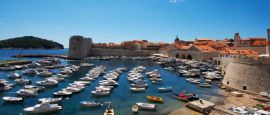Croatia Weather, climate and geography
Weather & climate
Croatia has a varied climate, with continental climate conditions inland and Mediterranean influence on the Adriatic coast. Peak season is July - August, with temperatures in the high 20s or in the 30s in places like Split, but you can expect plenty of sunshine from roughly May to October on the coast, and the shoulder seasons (May-June and September) are among the best times to visit Croatia. Inland is also hot in the summer but can be bitterly cold in the winter with sub-zero temperatures and heavy snowfall. Winter on the coast is milder but can be quite rainy.
Geography
Croatia stretches along the Adriatic coast, narrowing north-south, with a larger inland area (Slavonia) running west-east from Zagreb to the border with Serbia. The northern two-thirds of this border are formed by the River Drava, the east by the Danube, the southern part by the Sava. The country borders Slovenia and Hungary to the north, Serbia to the east, Montenegro to the southeast and Bosnia & Herzegovina (southeast from Zagreb; northeast from the Adriatic coastline). The coastline is highly indented, with over 1,100 islands and islets lying offshore.
Do you have any Feedback about this page?
© 2026 Columbus Travel Media Ltd. All rights reserved. No part of this site may be reproduced without our written permission, click here for information on Columbus Content Solutions.




 You know where
You know where